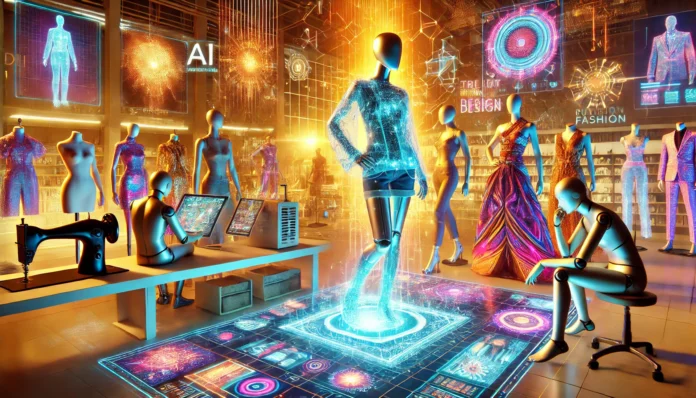The intersection of artificial intelligence (AI) and fashion is creating an unprecedented transformation in one of the world’s oldest industries. From automating design processes to predicting trends and reshaping the shopping experience, AI is tailoring the future of fashion with precision and creativity.
Revolutionizing Fashion Design
AI is no longer confined to repetitive tasks—it is now a collaborator in the creative process.
- AI-Driven Design Tools: Algorithms like those used by DeepFashion analyze vast datasets of design patterns, textiles, and styles to create innovative and trend-forward designs.
- Custom Creations: AI platforms enable personalized designs by analyzing consumer preferences and body measurements, offering a bespoke approach to fashion.
Example in Action
Luxury brand Balenciaga utilized AI to create a virtual fashion show, blending cutting-edge technology with avant-garde artistry.
Trend Prediction: Staying Ahead of the Curve
Fashion is fast-moving, and the ability to predict trends can make or break a brand. AI’s analytical prowess offers a competitive edge.
- Consumer Insights: AI tracks consumer behavior on e-commerce platforms, identifying emerging trends and preferences.
- Social Media Monitoring: Tools like Heuritech scan platforms like Instagram and TikTok to forecast the next big thing based on hashtags, posts, and influencer activity.
Impact on the Industry
Brands now produce collections that align with real-time market demand, reducing waste and maximizing profitability.
Enhancing the Shopping Experience
AI is reshaping how consumers shop, creating experiences that are more interactive, personalized, and engaging.
- Virtual Try-Ons: Augmented reality (AR) powered by AI lets shoppers “try on” clothes virtually, from their homes.
- Example: Zara and Sephora have integrated AR in their apps to enhance customer convenience.
- Personalized Recommendations: AI algorithms curate product suggestions based on browsing history, past purchases, and preferences, similar to platforms like Amazon and Stitch Fix.
Chatbots and Virtual Assistants
AI chatbots, such as those used by H&M and ASOS, provide 24/7 assistance, streamlining the online shopping journey.
Sustainability Through AI
AI’s role in promoting sustainable fashion is a critical development.
- Supply Chain Optimization: AI predicts demand more accurately, reducing overproduction and minimizing waste.
- Material Innovation: AI aids in discovering eco-friendly materials, like biodegradable fabrics or recycled textiles, to replace traditional, environmentally harmful materials.
- Circular Economy: Tools like EON’s CircularID™ enable clothing brands to track and manage product lifecycles, encouraging recycling and reuse.
Real-World Impact
Brands like H&M and Levi’s use AI for sustainable practices, such as water-saving technologies and waste reduction strategies.
Challenges and Ethical Considerations
The integration of AI in fashion is not without hurdles.
- Loss of Jobs: Automation in design and manufacturing raises concerns about job displacement in traditional roles.
- Intellectual Property Issues: As AI creates designs, questions arise about copyright ownership and originality.
- Digital Divide: Smaller brands with limited resources may struggle to keep up with AI-driven innovations.
The Future of Fashion and AI
AI is poised to further blur the lines between technology and creativity, making fashion more innovative, inclusive, and sustainable. As brands embrace AI, they not only stay relevant in a competitive market but also pave the way for a more efficient and eco-conscious industry.
By weaving AI into every thread of fashion, the industry is setting trends that go beyond clothing—it’s designing the future of how we interact with and consume fashion.





